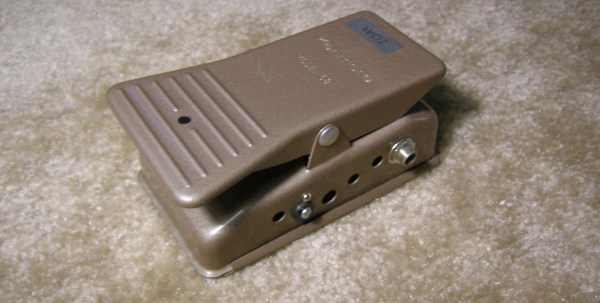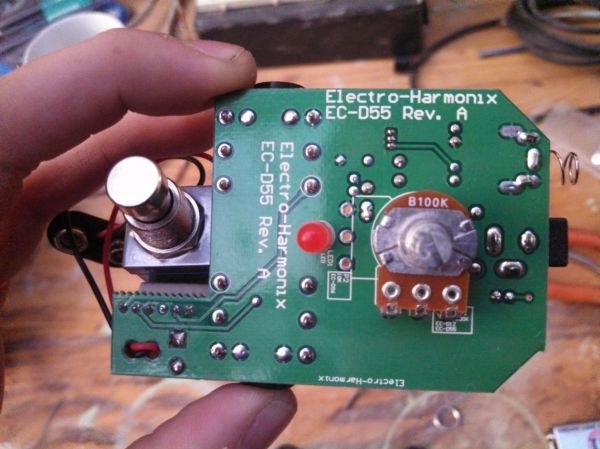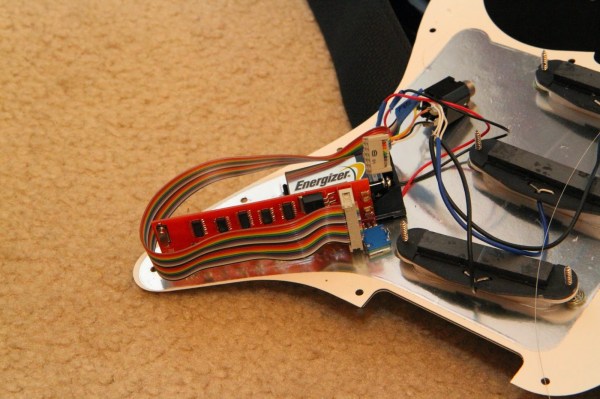[Frank] is a guitar builder and has to make a quantity of acoustic guitar bridges that wouldn’t make sense to do manually by hand each time. He wanted a way of duplicating bridges quickly and precisely but he didn’t want to go to a CNC machine. Instead, he build a 3D duplicating machine.
The machine has 3 perpendicular axes, just like a milling machine. Mounted to the Z Axis is an air powered spindle that can reach 40,000 RPM. All 3 axes are moved by the operators hands. Normally, free-hand cutting something like this would be very difficult. [Frank’s] solved this in his machine by using a stylus that is offset from the cutting bit. The stylus is the same effective length and diameter of the cutting bit and is guided over a finished bridge pattern. While the stylus is tracing the pattern, the spindle and bit are removing material from a bridge blank. The stylus is continually moved over the entire pattern bridge until the spindle is finished carving out a new bridge out of the blank.
To aid in lifting the heavy Z Axis and spindle, [Frank] added a counter balance to make tracing the pattern extremely easy. Once the new bridge is carved, it only requires minor sanding to remove the tool marks before being installed on a guitar! [Frank] admits his linear bearings and rails are very rigid but also very expensive. If you’re interested in a less-expensive 3D duplicator, check out this project.

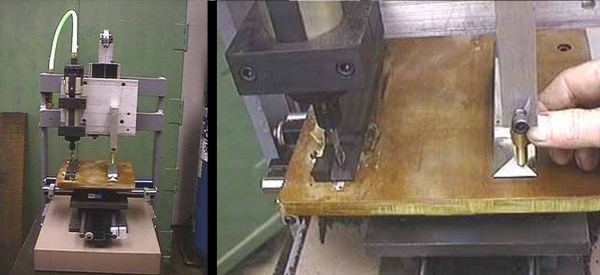
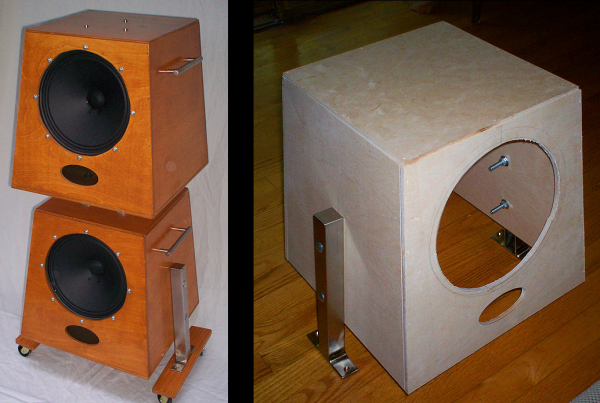
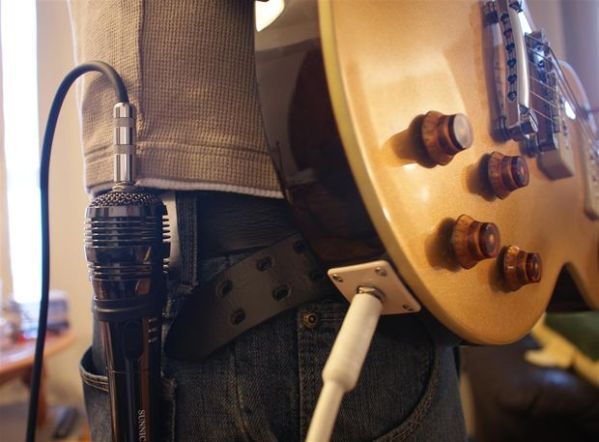
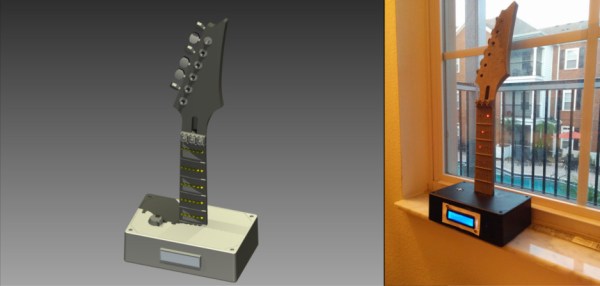
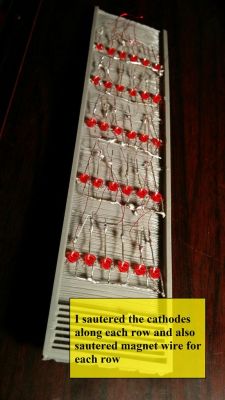 [MushfiqM] started by rendering a 3D model of an abbreviated guitar using Autodesk Inventor. He then printed his creation in 3 parts: headstock, neck, and fretboard. The neck of the guitar was hollowed out to allow room for a matrix of LEDs which would show the finger positions. [MushfiqM] then painstakingly soldered in a charlieplexed matrix of 30 leds, all connected by magnet wire. The LEDs are controlled by an Arduino UNO, which has the chord and scale charts stored in flash.
[MushfiqM] started by rendering a 3D model of an abbreviated guitar using Autodesk Inventor. He then printed his creation in 3 parts: headstock, neck, and fretboard. The neck of the guitar was hollowed out to allow room for a matrix of LEDs which would show the finger positions. [MushfiqM] then painstakingly soldered in a charlieplexed matrix of 30 leds, all connected by magnet wire. The LEDs are controlled by an Arduino UNO, which has the chord and scale charts stored in flash.